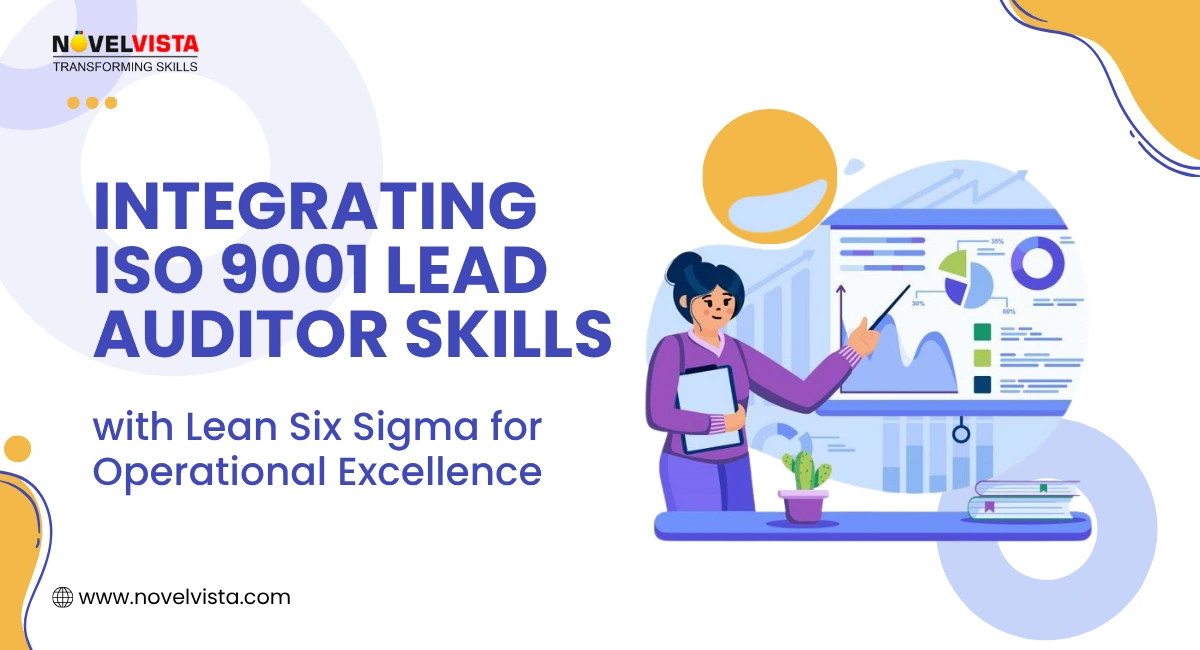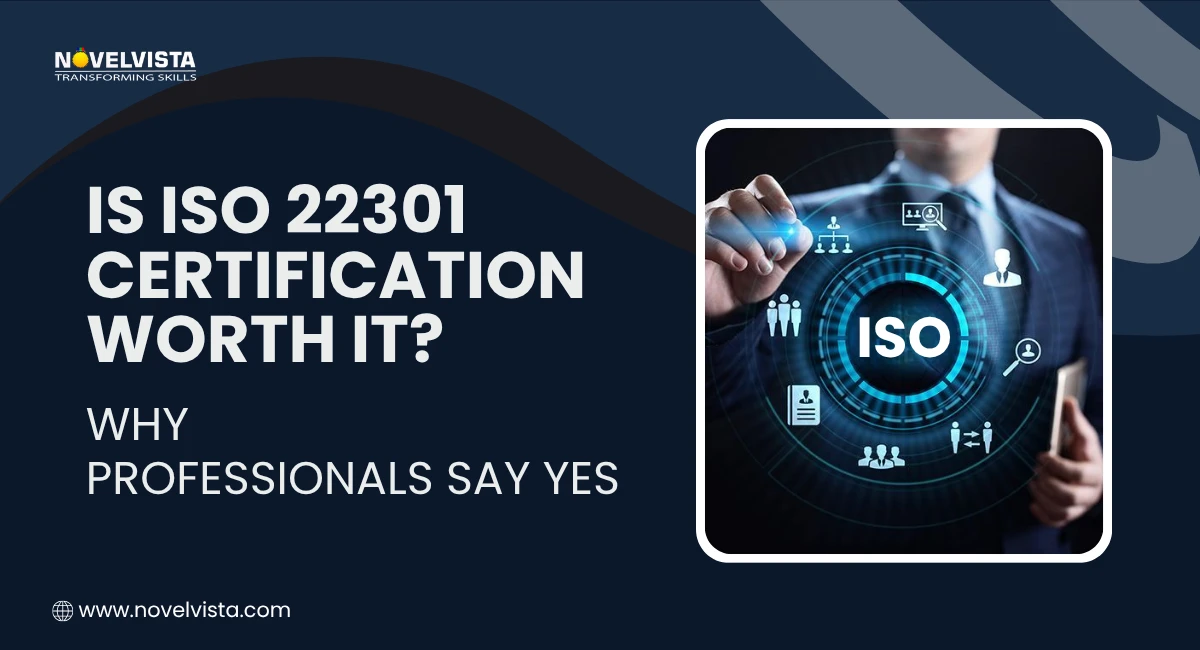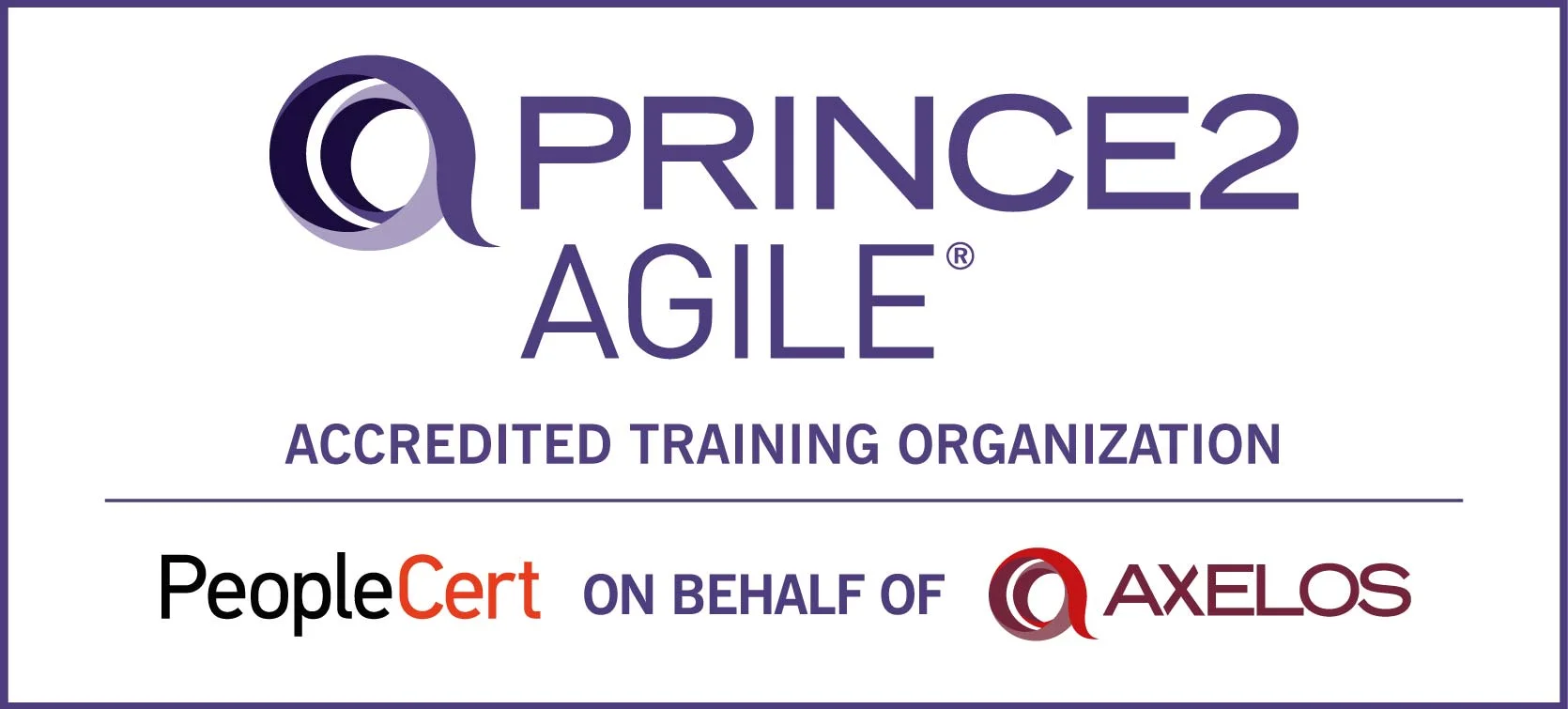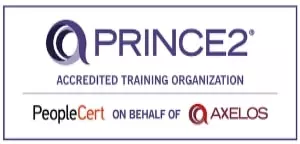- ISO 9001 and Lean Six Sigma: A Quick Refresher
- Common Ground Between ISO 9001 and Six Sigma
- ISO 9001 vs Six Sigma: Key Differences at a Glance
- How to Integrate ISO 9001 and Lean Six Sigma Effectively
- Challenges in Integration, and How to Overcome Them
- Roles of ISO 9001 Lead Auditors and Lean Six Sigma Experts
- Benefits of Integrating ISO 9001 Lead Auditor Skills with Lean Six Sigma
- Conclusion: The Power of Integration
You’ve probably seen companies proudly display their ISO certification or talk about their Lean Six Sigma projects, but very few know how powerful these two can be when combined.
So, why are more organizations bringing ISO 9001 and Six Sigma together?
Because while ISO 9001 builds structure and accountability, Six Sigma drives measurable performance improvements. When both frameworks work side by side, teams achieve faster results, fewer errors, and stronger customer trust.
This blog explores how combining ISO 9001 and Six Sigma creates a system that doesn’t just comply with standards but truly transforms operations, improving efficiency, boosting quality, and building a culture of excellence.
The concepts shared here are backed by certified ISO 9001 Lead Auditors and Lean Six Sigma Black Belt professionals who have trained teams and led process improvement projects across industries. Every point is drawn from frameworks and audit experiences that meet global quality standards.
ISO 9001 and Lean Six Sigma: A Quick Refresher
Before diving into integration, let’s quickly understand both pillars.
ISO 9001
It’s a globally recognized Quality Management System (QMS) standard that helps organizations deliver consistent, reliable, and customer-focused services. Built around the Plan-Do-Check-Act (PDCA) cycle, it focuses on structured planning, performance checks, and continual improvement. The framework ensures businesses don’t just work efficiently but also maintain customer trust and compliance across every department.
[Read our comprehensive guide on ISO 9001 here]
Lean Six Sigma
Lean Six Sigma takes process improvement to a deeper level. It combines Lean’s focus on eliminating waste with Six Sigma’s data-driven defect reduction. The DMAIC model, Define, Measure, Analyze, Improve, and Control, helps teams identify bottlenecks, reduce variation, and improve performance at every stage.
When you blend ISO 9001’s structure with Six Sigma’s analytical tools, you get a system that’s both organized and performance-driven.
[Explore our full Six Sigma methodology blog here]Common Ground Between ISO 9001 and Six Sigma
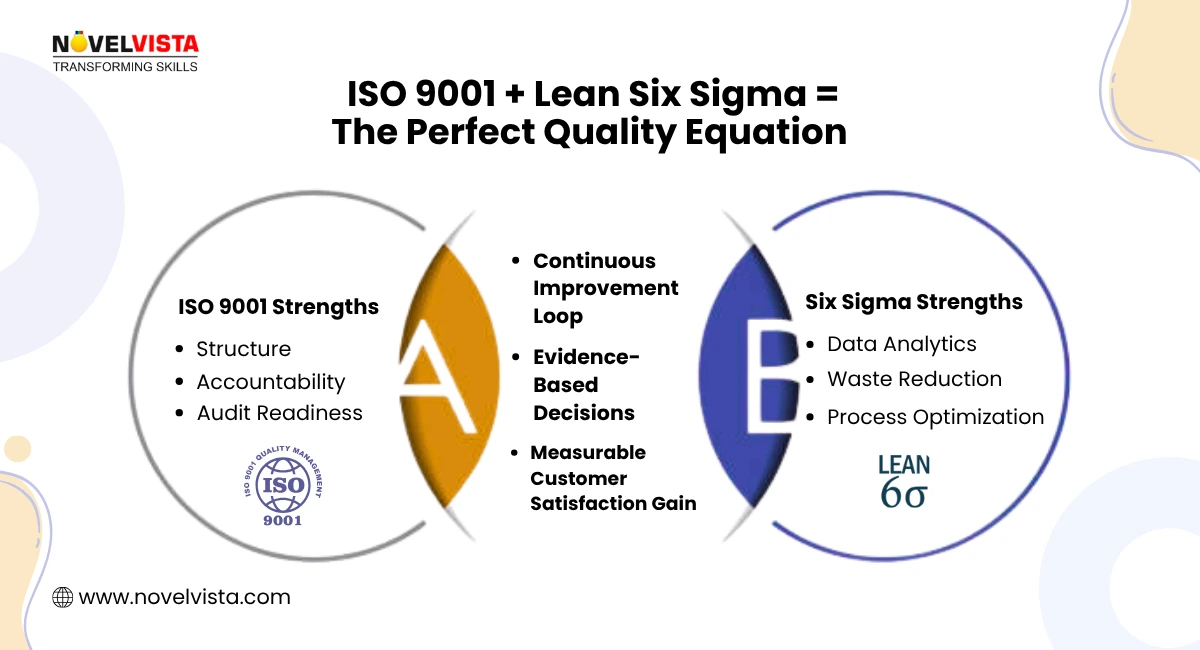
At first glance, ISO 9001 and Six Sigma may look like two different paths. But they actually share a strong foundation that revolves around improvement, consistency, and accountability.
Here’s where they align:
- Continuous improvement and customer satisfaction: Both encourage teams to analyze performance data, identify weak areas, and keep improving.
- Fact-based decisions: Every action under these frameworks is guided by evidence, not assumptions, ensuring smarter, more accurate solutions.
- Structured problem-solving: ISO 9001’s PDCA and Six Sigma’s DMAIC follow a step-by-step cycle that prevents guesswork.
- Culture of accountability: Both rely on defined roles, responsibilities, and measurable outcomes to build high-performing teams.
That’s why many organizations find the integration natural; ISO 9001 provides the quality backbone, while Six Sigma sharpens process precision.
ISO 9001 vs Six Sigma: Key Differences at a Glance
While they share many goals, their methods and applications differ. Understanding these differences helps in merging them effectively.
| Aspect | ISO 9001 | Six Sigma |
| Focus | Organization-wide QMS and compliance | Process-level defect reduction |
| Approach | PDCA cycle, standardization, documentation | DMAIC model, statistical analysis |
| Goal | Consistency, compliance, customer trust | Efficiency, defect reduction, precision |
| Scope | Enterprise-wide | Process-specific |
| Tools | Internal audits, KPIs, corrective actions | Root cause analysis, FMEA, control charts |
| Certification | ISO 9001 Lead Auditor / Implementer | Lean Six Sigma Green/Black/Master Belt |
In short:
- ISO 9001 sets the structure, defining how things should run.
- Six Sigma ensures that structure performs at its best through data-backed process optimization.
The information presented here follows international guidelines from ISO (International Organization for Standardization) and recognized Six Sigma certification bodies like GSDC. It reflects how organizations across the world integrate these frameworks to meet both compliance and operational excellence goals.
How to Integrate ISO 9001 and Lean Six Sigma Effectively
Blending ISO 9001 and Six Sigma is all about alignment, making sure structure and analytics work hand in hand. When done right, it can turn good processes into great ones.
Here’s how organizations can make the integration smooth and practical:
- Map PDCA to DMAIC: The PDCA cycle of ISO 9001 (Plan-Do-Check-Act) aligns beautifully with the DMAIC (Define-Measure-Analyze-Improve-Control) model. PDCA provides structure, while DMAIC dives deeper into performance analytics.
- Use ISO 9001 data for Six Sigma analysis: The detailed documentation from ISO audits and quality checks becomes a goldmine for identifying process inefficiencies.
- Create shared goals: Both teams should align on outcomes like defect reduction, compliance improvement, or customer satisfaction rather than working in silos.
- Train cross-functional teams: Encourage ISO 9001 Lead Auditors and Six Sigma practitioners to collaborate. Shared learning enhances process efficiency ISO 9001 projects and ensures everyone speaks the same “quality” language.
When ISO 9001 provides the framework and Six Sigma adds precision, businesses move from routine compliance to continuous innovation.
Challenges in Integration, and How to Overcome Them
Even though the benefits are clear, combining ISO 9001 and Six Sigma can come with a few roadblocks. Let’s look at the most common ones and how to solve them.
- Cultural resistance: Teams often see Six Sigma as complex or see ISO 9001 as “just documentation.” To fix this, leaders must show how both contribute to better results and create a culture of shared success.
- Process alignment issues: It’s easy for teams to focus on their own methods. Start with small pilot projects that connect both frameworks. This helps everyone see quick wins before expanding organization-wide.
- Data management complexities: Both rely on accurate metrics. Standardize KPIs early and maintain consistent quality improvement tools for tracking performance.
- Skill gap: Not everyone understands both frameworks deeply. Training staff in basic Six Sigma and ISO auditing ensures smoother collaboration and smarter decisions.
Roles of ISO 9001 Lead Auditors and Lean Six Sigma Experts
Every great improvement system needs the right people driving it. Here’s how each role contributes:
ISO 9001 Lead Auditors
- Evaluate the organization’s Quality Management System.
- Verify whether processes comply with standards.
- Conduct continuous improvement audits to identify opportunities for growth.
- Ensure documentation and process discipline stay strong.
Lean Six Sigma Professionals
- Use data and analytics to find root causes of inefficiencies.
- Apply quality improvement tools like control charts and FMEA to enhance accuracy.
- Drive measurable change using the DMAIC model.
Benefits of Integrating ISO 9001 Lead Auditor Skills with Lean Six Sigma
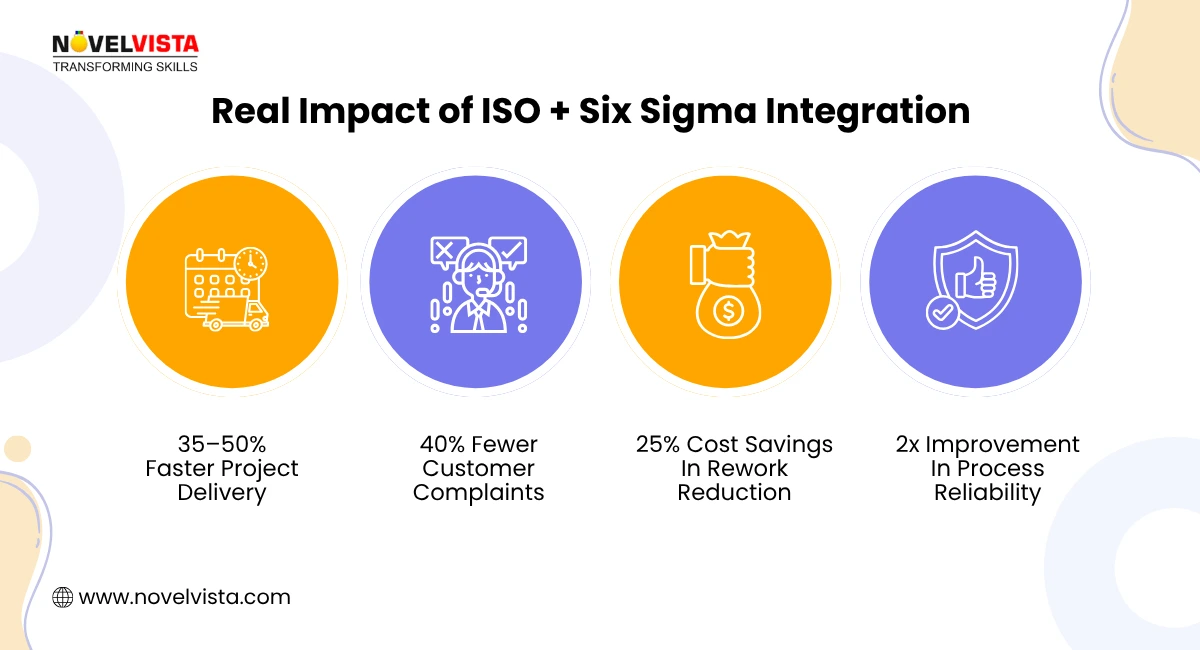
The combination of ISO 9001 and Six Sigma delivers results far beyond traditional compliance. It transforms how organizations think, operate, and improve.
Here are some of the biggest benefits:
- Higher process efficiency: By combining PDCA and DMAIC, companies streamline operations and minimize rework.
- Stronger quality systems: Teams use quality improvement tools more effectively during continuous improvement audits, ensuring data-driven decisions.
- Improved customer satisfaction: When processes are efficient and consistent, customers notice, and trust grows.
- Data-backed improvement culture: Both frameworks encourage metrics-based discussions instead of assumptions.
- Competitive advantage: Organizations with integrated systems adapt faster to changes and maintain consistency even during growth phases.
Integration doesn’t just improve processes; it builds a performance mindset that keeps evolving.
Download: Operational Excellence Toolkit – From Compliance to Performance
Go beyond ISO 9001 compliance. Get ready-to-use templates
and checklists to turn your quality system into a
performance-driven framework powered by Six Sigma.
Conclusion: The Power of Integration
Blending ISO 9001 and Six Sigma isn’t just about merging two systems; it’s about creating a unified engine for performance and trust. ISO 9001 brings order, while Six Sigma delivers results. Together, they help organizations improve faster, make smarter decisions, and maintain a strong focus on customers.
As industries continue to chase excellence, professionals who can bridge these two worlds will be the ones shaping the future of operational excellence.
Next Step: Take Your Quality Expertise to the Next Level
Want to master both frameworks? NovelVista’s ISO 9001 Lead Auditor and Lean Six Sigma Yellow Belt training programs help you connect compliance and performance like never before. Learn practical techniques, earn globally recognized certifications, and turn your quality expertise into measurable business success.Author Details

Mr.Vikas Sharma
Principal Consultant
I am an Accredited ITIL, ITIL 4, ITIL 4 DITS, ITIL® 4 Strategic Leader, Certified SAFe Practice Consultant , SIAM Professional, PRINCE2 AGILE, Six Sigma Black Belt Trainer with more than 20 years of Industry experience. Working as SIAM consultant managing end-to-end accountability for the performance and delivery of IT services to the users and coordinating delivery, integration, and interoperability across multiple services and suppliers. Trained more than 10000+ participants under various ITSM, Agile & Project Management frameworks like ITIL, SAFe, SIAM, VeriSM, and PRINCE2, Scrum, DevOps, Cloud, etc.
Course Related To This blog
ISO 9001:2015 Lead Auditor Training and Certification
Confused About Certification?
Get Free Consultation Call

